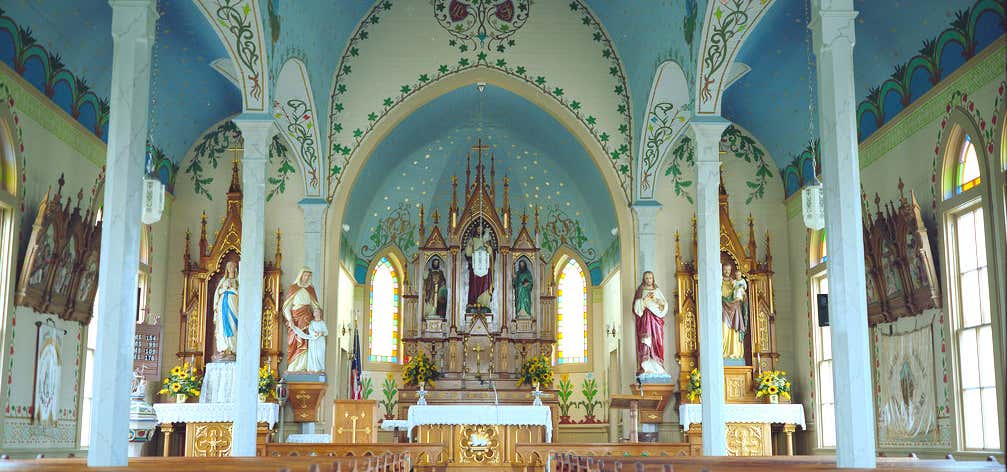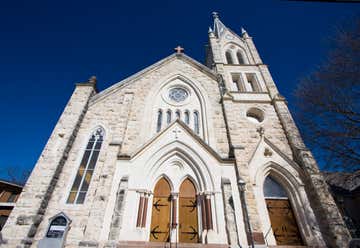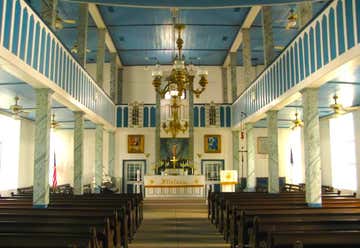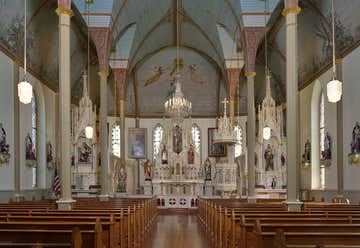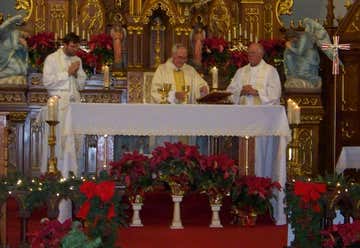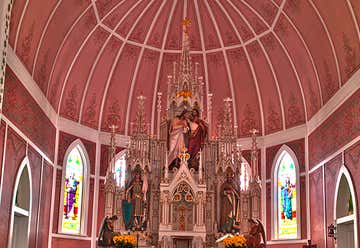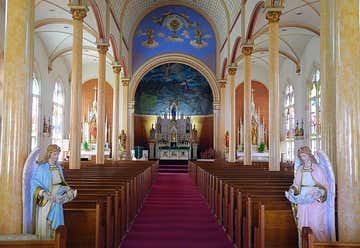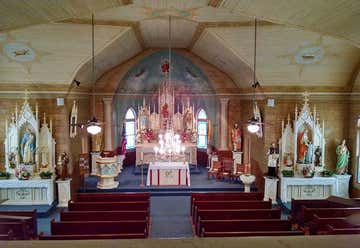Hill Country, right in the heart of Texas, is marked by its rolling fields of bluebonnets, charming small towns, and unique culture. The German and Czech immigrants who settled Hill Country in the mid-19th century brought over as much of their Old World ways of life as possible. Bakeries serving traditional treats, cultural celebrations, and other things evoke the roots of the settlers are still apparent in Hill Country culture today. One totally unique way these immigrants brought over their homeland was through their painted churches.
Some may look simple (and totally quaint) on the outside, but once you enter, you'll be floored by the incredibly ornate and lively decor within. Surprisingly bright colors, gold leaf, and rich detail are hallmarks of painted churches. The intent was to replicate the grand, elaborate Gothic churches in their homeland, but what they created wound up being so much more special. In a way, these churches are a metaphor for Hill Country's little hamlets; the best of the Old World and the New World, and pride in the past mixed with hope for the future.
Fredericksburg's St. Mary's Catholic Church actually has a few buildings, including an 1863 stone church (the Marienkirche) and the nearby Our Lady of Guadalupe Catholic Church, which hosts Spanish language services, but the crown jewel is the newer St. Mary's Church building. By the early 1900s, the old church was too small, and a new building was erected in 1908. The newer church boasts all kinds of Gothic features, including buttresses and the corner tower. It's also covered in lovely murals, of course! They even painted their rare wooden pipe organ. They offer guided tours each Sunday after the 9 am Mass. It's one of the larger painted churches to be found in Hill Country, and it's an impressive sight... and it's run by a friendly community.
St. Paul's Lutheran Church has that adorable, white clapboard and belltower look on the outside, and a stunningly decorated scheme on the inside. It was founded in 1870 by a group of Wendish immigrants led by a man named Pastor Johann Kilian. The Wends are a European Slavic minority and are alternately sometimes called "Sorbians", by the way. In addition to the colorful paint job (which was recently restored and renovated), St. Paul's boasts the tallest pulpit in Texas, located on the second floor of the church. Historically, the men in town sat on the upper floor while the women and children sat down below, but these days, anyone can sit wherever they want.
The painted St. Mary's Church of the Assumption is a beautiful environment to worship, but it has humble beginnings. The Praha area was settled primarily by deeply religious Czech immigrants. But, though their faith was strong, their numbers were few, with more Catholics spread out far and wide across the area. Because of this, traveling priests didn't often make it out to Praha; they would get to celebrate Mass once a month if they were lucky. But finally, in 1865, the people came together to build a little stone chapel with a nearby cottage for a traveling priest. Ever since then, the parish has been growing and keeping the community together. The present church was built in 1895 and was placed on the National Register of Historic Places in 1983.
Yes, I know, a lot of the churches have really similar names! This St. Mary's is in High Hill, near Schulenburg, and was constructed in 1906. Famed Texas church architect Leo M.J. Dielmann gave it a Gothic Revival feel, but the church really gets its personality from the art, done by Ferdinand Stockert and Hermann Kern in 1912. It's sometimes even referred to as the "Queen of the Painted Churches". The designs were done freehand on canvas, which was then hung on the walls.
St. John the Baptist Catholic Church had a bit of tricky luck with their first two churches (the first was razed by a hurricane in 1909 and the second burned down shortly after it was finished) but the third is just as ornate as its predecessors, and it's remained standing ever since. There's a legend about how this church got its paint job. As the story goes, an itinerant artist was hired to decorate the newest church, and after he completed the work, he mysteriously disappeared, never to return. It wasn't until the 70s that an interior design professor and decorative painting scholar who studied the techniques and artistry of these painted churches pieced together that the artist was likely a noted decorative painter named Fred Donecker. Little is known about Donecker, but he was known to have done a few other painted churches in Texas.
One of two churches in Hill Country to have the very specific name of "Saints Cyril & Methodius Catholic Church", Dubina's is a stunner. The original building was also lost in the 1909 hurricane, and the new one (again, designed by Leo Dielmann) was completed around 1912. The iron cross atop the church was salvaged from the original, and had been made by a freed slave/blacksmith. To this day, there's no record of who is behind the gorgeous stamp-stencils and artwork in the church. It had actually been whitewashed over during the 1950s, but it was restored in the 1980s. Original designs and even the same stamp-stencils were used on most of it, but of course, the parishioners added their own colorful details in as well.
The Queen of Peace Catholic Church was built around 1919 in the tiny town of Sweet Home. It's believed that Fred Donecker painted the interior, which is quite light and simple compared to some of the others. A mural depicts the ascension of Christ, flanked by angels, and, as with many painted churches, the columns are done in a trompe l'oeil design meant to appear as marble. The exterior is a Gothic Revival style done in red brick, giving the whole place a cozy and quaint feel.
The other painted Saints Cyril & Methodius Catholic Church is in Shiner. This is a more recently painted church; it was built in the 1920s and was painted in the 1950s, when some congregations were covering their artwork up. Look for the mural of Jesus in the Garden of Gethsemane, the Latin inscription "Ecce Panis Angelorum" (or, "behold the bread of angels."), and the painting of angels playing instruments near the choir loft.
The Ascension of Our Lord Catholic Church we see today in Moravia, like many others, was built after the 1909 hurricane destroyed an original building. The church's pastor designed the wooden, cross-shaped church, which he believed would better withstand inclement weather. This is a church we know was painted by Fred Donecker and his sons, and estimates guess he decorated this one in 1923, several years after painting St. John the Baptist. It's one of the best preserved and most untouched painted church murals, so it's worth checking out.
Some companies offer guided tours of Hill Country's painted churches, which makes visiting all of these gems super convenient and provides a ton of great background on the early settlers and German/Czech-meets-Texas culture. There's also a PBS documentary special called "The Painted Churches of Texas: Echoes of the Homeland" that lets anyone experience these unique places of worship firsthand.
